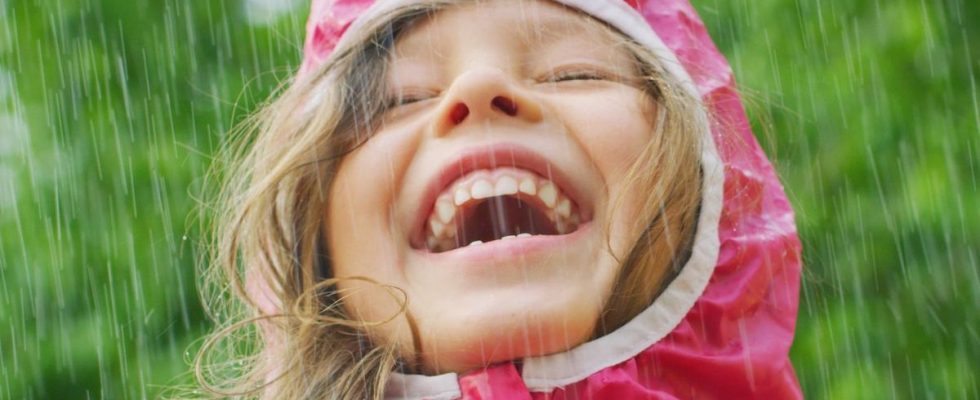Published on
Updated
Reading 2 mins.
When it rains, children like to lift their chins and open their mouths to catch a few raindrops. A gesture which is however not without danger for health.
Although drinking rainwater is not a common practice in Western countries, some may be tempted to collect it for their own consumption. But the site of the French administration reminds that this water should not be used for food consumption because it is polluted.
“Eternal pollutants” in rainwater
Rainwater contains perfluoroalkyl and polyfluoroalkyl substances, more commonly known as PFAS. These chemical substances, resulting from industrial production, are also called “eternal pollutants” because they take time to degrade (we are talking about hundreds or even thousands of years). Paints, varnishes, pesticides, textiles, food packaging, waterproofing agents, Teflon coatings… PFAS are unfortunately everywhere!
In recent decades, they have spread into waters, soils and sediments around the world, making rainwater undrinkable, regardless of the region of the world. This was revealed by a study published in August 2022 in the scientific journal Environmental Science and Technology.
Pollutants linked to certain cancers, complications during pregnancy…
Considered as endocrine disruptors, PFAS are increasingly identified in the scientific literature as risk factors for human health. In particular, they would be at the origin of certain cancer (testicles, breast, kidneys). Significant and prolonged exposure to PFAS may also promote obesity, increase the rate of cholesterol or cause complications during pregnancy, including increased risk of miscarriage or high blood pressure (pre-eclampsia).
“Over the past twenty years, guideline values for PFAS in drinking water, surface water and soil have decreased significantly, due to new knowledge about their toxicity. As a result, levels of PFAS in environmental media are now everywhere above guideline values.”, the authors of the study said in a press release titled “It is raining PFAS: even in Antarctica and on the Tibetan Plateau, rainwater is unfit for consumption”.
The presence of bacteria and fungi
Questioned by Ouest France, Marillys Macé, director general of the Water Information Center, indicates that even if the rainwater were not polluted with PFAS, it would remain unfit for consumption due to the presence of bacteria. and mushrooms. “Without even mentioning the presence of PFAS, this water is unfit for consumption. The idea is not to eventually allow people to drink rainwater without it having been previously treated to be drinkable”she explained.
Rainwater: for what uses?
As a reminder, rainwater can be used for:
- Fill the toilet flush;
- Wash the floors;
- Wash clothes, provided you use a water treatment device that provides disinfection in particular;
- Water your garden or clean your car.
Please note that it is forbidden to use rainwater that has run off a roof containing asbestos cement or lead inside your home.
